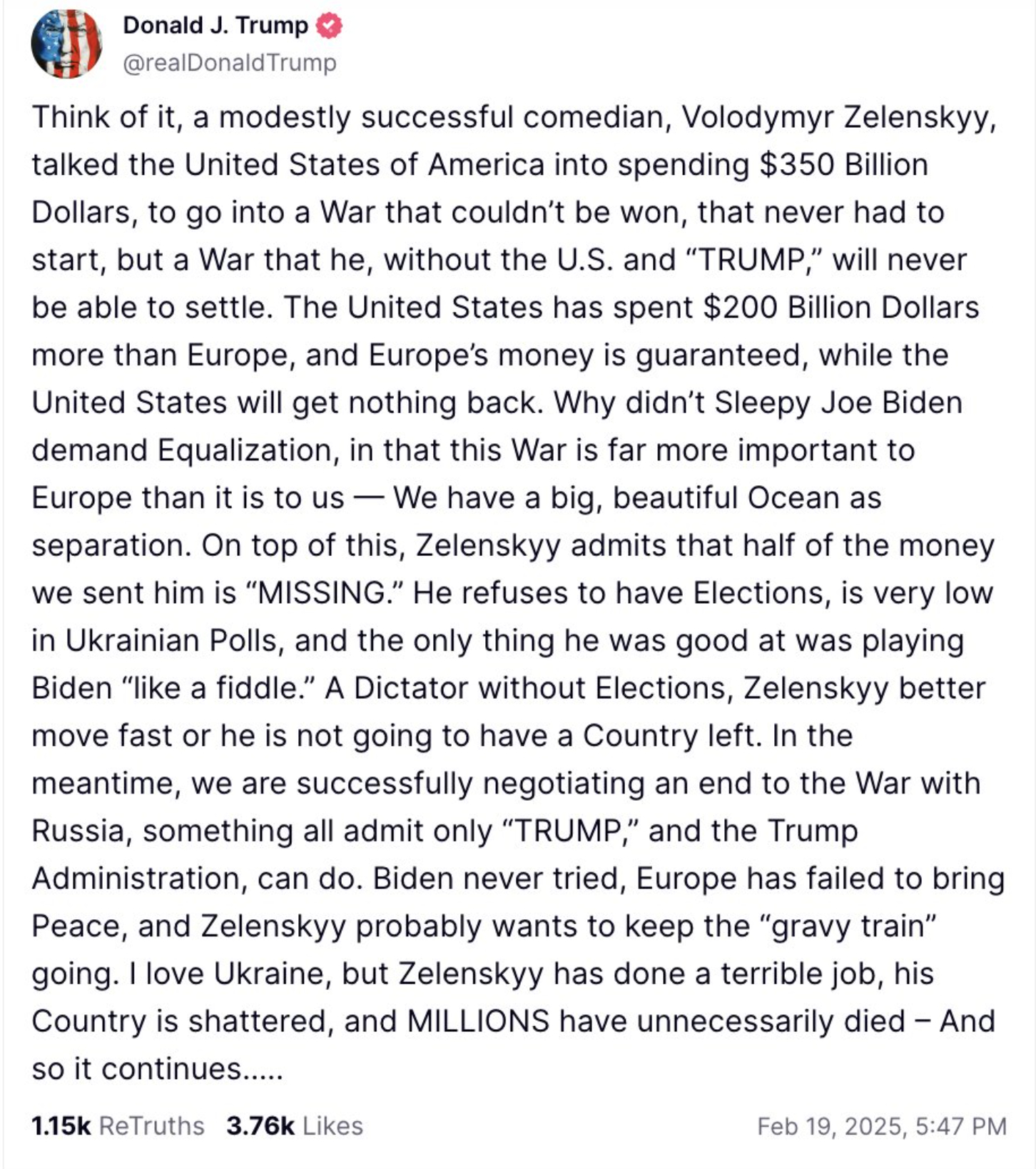The Great Reordering and the Birth of a Transactional World Order

The sudden shift in U.S.-Russia relations intensifies pressure on Ukraine and Europe, reshaping the dynamics of the conflict.
Opinion – Editorial
Global politics is undergoing a seismic shift. The order once defined by American primacy and liberal institutionalism is unraveling, giving way to transactional alliances and unapologetic realpolitik. At the heart of this transformation lies an unlikely axis: the United States and Russia, whose détente under Trump’s second term is redrawing strategic fault lines. From Europe’s marginalisation to China’s encirclement and the Global South’s precarious balancing acts, this realignment carries profound implications. This article dissects the forces driving this new era and maps its consequences for a world in flux.
The second term of Donald Trump has inaugurated a profound realignment in global geopolitics, dismantling the isolationist stance of the Biden era in favour of a transactional, interest-driven realpolitik. Central to this transformation is the burgeoning rapprochement between the United States and Russia, catalysed by the landmark Riyadh Summit on 18 February 2025. This summit, notable not merely for its high-level participants but for the conspicuous absence of Ukraine and European representation, underscored a fundamental recalibration of the global order.
Under Biden, American foreign policy prioritised the containment of Russia through economic sanctions and diplomatic ostracisation. However, Trump's return to power heralded an abrupt departure from this orthodoxy. The Riyadh Summit, attended by U.S. Secretary of State Marco Rubio and Russian Foreign Minister Sergey Lavrov, marked the culmination of this shift. The exclusion of Ukraine from negotiations was both deliberate and symbolic, signalling Washington's prioritisation of strategic pragmatism over solidarity with Kyiv.
A New Chapter in U.S.-Russia Relations
At the heart of the U.S.-Russia détente lie three interlocking pillars: diplomatic reintegration, economic collaboration, and a recalibration of the Ukraine conflict. Diplomatically, both nations agreed to restore embassies to full capacity, reversing the attrition of personnel expelled during the sanctions era. Economically, the presence of Kirill Dmitriyev, head of the Russian Direct Investment Fund, signalled the dawn of renewed investment and trade channels.
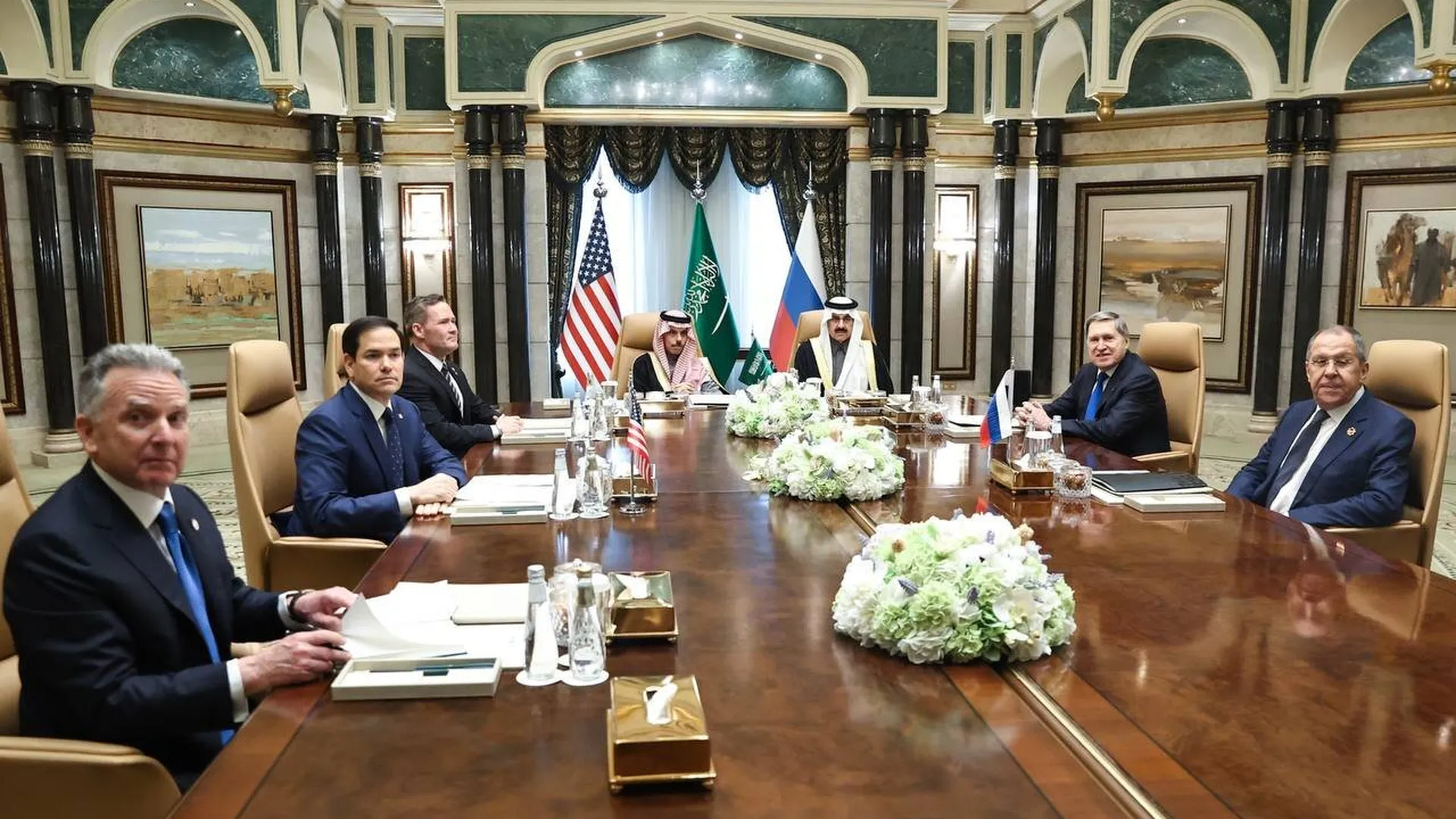 U.S. and Russia pursue closer relations following Ukraine talks in Riyadh.
U.S. and Russia pursue closer relations following Ukraine talks in Riyadh.
Russian Foreign Minister Sergey Lavrov hailed the Riyadh talks as "highly productive," echoing Rubio’s emphasis on diplomatic restoration, conflict resolution in Ukraine, and strengthened economic ties. To institutionalise this progress, both sides agreed to appoint special envoys for regular consultations on Ukraine, a notable departure from Biden-era isolationism.
The dialogue was highly fruitful. We not only listened but also understood each other. I am confident that the American side has gained a clearer understanding of our position, which we reiterated in detail, drawing on numerous statements by President of Russia Vladimir Putin and supported by specific examples.
— Sergey Lavrov
Most consequential, however, was the consensus on Ukraine. Both Trump and Putin reframed the conflict not as a battleground of democratic values but as a solvable territorial dispute. Rubio’s declaration that the U.S. would not support NATO deployments in Ukraine reinforced this stance.
Europe’s Strategic Paralysis
The Riyadh Summit’s exclusion of European stakeholders underscored the continent's waning influence in shaping post-conflict negotiations. French President Emmanuel Macron’s hastily convened Paris Summit sought to project European unity but instead exposed fissures within the bloc.
The Paris Summit itself was less a demonstration of European resolve than a symptom of its paralysis. Convened by Macron in the wake of Trump’s “shock move,” the gathering produced little beyond rhetorical condemnations and vague commitments to unity. As European leaders debated principles and the importance of transatlantic alliances, Rubio’s remarks underscored the harsh reality: peace would require compromise from all sides, including Ukraine and Europe. His reassurance that Europe would eventually be included in the process sounded more like a consolation than a genuine commitment, further emphasising their diminished agency.
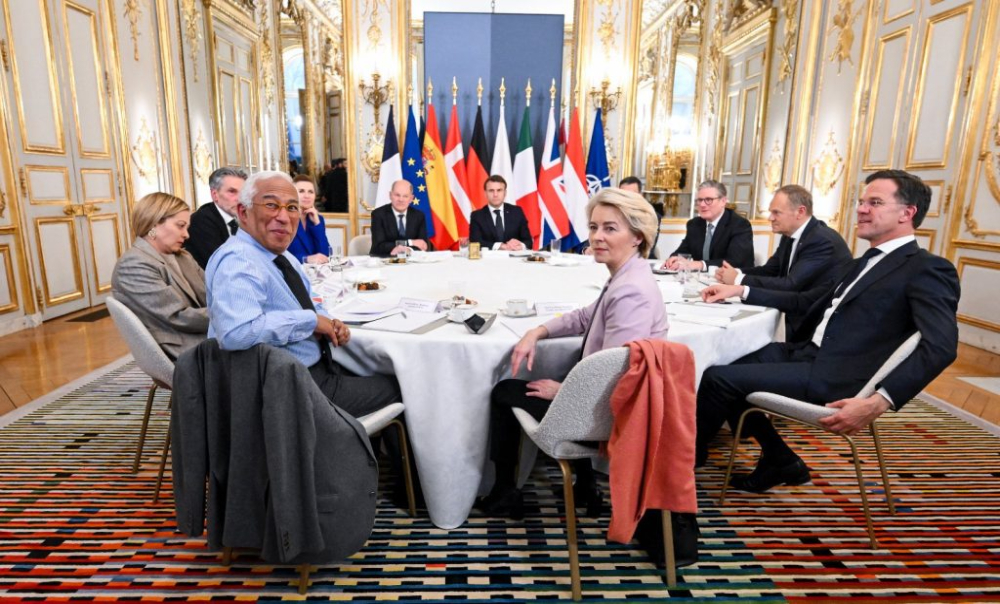
European leaders at the Paris Summit grapple with unity amid deepening divisions.
While Macron advocated for an assertive EU stance, German Chancellor Olaf Scholz and Italian Prime Minister Giorgia Meloni resisted escalation, wary of jeopardising economic ties with Moscow.
British Prime Minister Keir Starmer, adopting a mediating role, announced plans to engage directly with Trump, thereby underscoring the UK’s post-Brexit tilt towards Washington. Yet this diplomatic flurry produced little more than symbolic gestures, lacking substantive outcomes.
Trump’s Grand Strategy: Isolating China
Trump’s rapprochement with Putin transcends bilateral interests; it is the linchpin of a broader strategy to isolate China. The Munich Security Conference’s "Multipolarity Report" underscored the waning of U.S. unipolar dominance and the rise of competing power centres. By courting Russia, Trump could fracture the Sino-Russian entente, mirroring Nixon and Kissinger’s 1970s China pivot. The Kremlin’s willingness to engage suggests that Putin views economic reintegration with the West as preferable to Beijing’s asymmetrical partnership.
This reconfiguration evokes Cold War-era strategies of détente, albeit within a fractured, multipolar landscape. Nixon's outreach to China in the early 1970s aimed to counterbalance Soviet power, much as Trump now leverages Russia against China. Yet the risks of a new Yalta-style division, reshaping spheres of influence in a multipolar world, loom large. Just as Roosevelt, Churchill, and Stalin partitioned post-war Europe, Trump and Putin’s understanding threatens to redraw Eurasian boundaries, with Ukraine as the sacrificial pawn.
Winners, Losers, and the Road to 2030
Immediate Fallout
The immediate consequence of this realignment is Ukraine’s deepening isolation. Trump’s overt disdain for Ukrainian President Volodymyr Zelenskyy, branding him a "dictator without elections," epitomises Kyiv’s diminishing leverage.
Zelenskyy's isolation became starkly evident when the Riyadh Summit convened without Ukrainian representation. In response, Zelenskyy announced plans to visit Saudi Arabia to meet Crown Prince Mohammed bin Salman, seeking clarity on the negotiations that bypassed Kyiv entirely. However, as a nation reliant on U.S. arms and support, Ukraine’s ability to resist these developments appears increasingly tenuous. Without unexpected European intervention, Kyiv might soon face an unenviable choice: accept unfavourable terms or risk further attrition on the battlefield.
The absence of Ukrainian representation at both the Riyadh Summit and subsequent negotiations reinforced the perception of abandonment. Lavrov’s post-summit remarks that “we didn’t just listen; we understood each other” underscored the depth of U.S.-Russia alignment. This sentiment was echoed by U.S. Secretary of Defense Pete Hegseth, who, when pressed on what Russia was conceding in the negotiations, deflected by insisting that “President Putin responds to strength.” His inability to outline concrete Russian concessions highlighted how Washington’s priorities have shifted from supporting Kyiv to accommodating Moscow’s core demands.
+ Chokepoints and Cold Fronts: Trump’s Bold Maritime Strategy in a New Great Game
+ Trump, Putin, and the Fate of Ukraine: A Geopolitical Gamble
+ The Dawn of a New Era: Trump’s Return to Power
Further compounding Ukraine’s predicament is Trump’s extraordinary demand for $500 billion in mineral wealth as repayment for U.S. wartime aid. (The figure appears more symbolic than realistic, given that much of the aid has already cycled back to U.S. defense contractors as profit.) The draft agreement, revealed by The Telegraph on 17 February 2025, proposes joint U.S.-Ukrainian control over the country’s critical resources, including ports, oil, gas, and rare earth minerals, with Washington claiming half of all revenues from future extraction and licences. The terms resemble post-World War I reparations, echoing the punitive economic clauses of the 1919 Versailles Treaty, which crippled post-WWI Germany, and the Ottoman Empire's capitulations, initially granted as trade privileges but later exploited by Western powers to undermine Ottoman economic sovereignty.
On 11 February, Donald Trump remarked, “Ukraine may be Russian someday, or they may not. But I want this money back.” His insistence underscores the brutal pragmatism now underpinning U.S. policy toward Kyiv: Ukraine must either accept economic subjugation or risk further isolation.
Eight days later, on 19 February, Ukrainian President Volodymyr Zelenskyy rejected the proposal outright, declaring, “I defend Ukraine. I can't sell our country.”
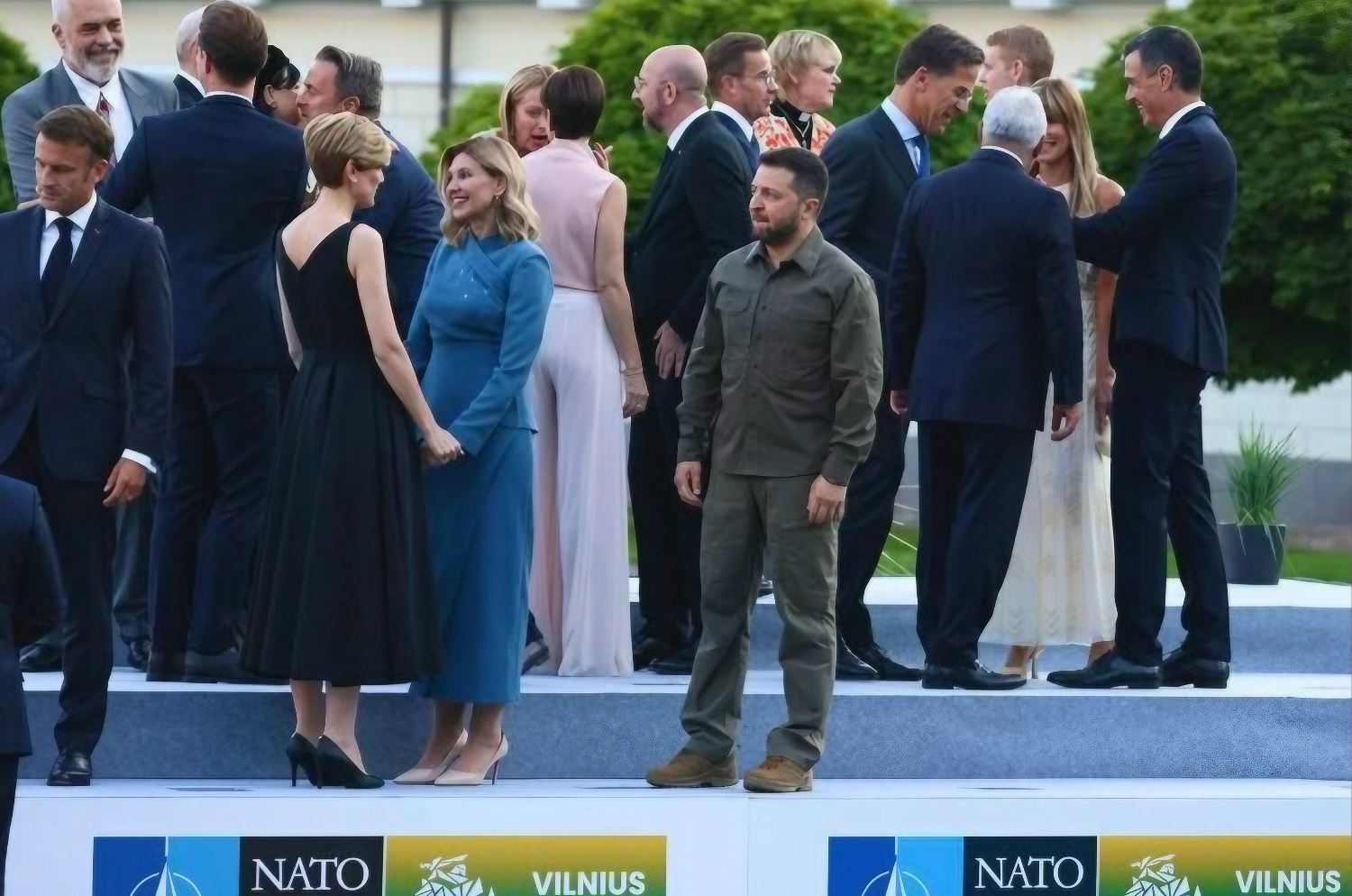
This economic stranglehold complements Trump's territorial demands, underscoring a stark reality: Ukraine is no longer viewed as a strategic ally but as a bargaining chip in a broader geopolitical reordering. Ukraine’s predicament was further compounded by transatlantic divisions laid bare at the Munich Security Conference, where U.S. and European interests diverged starkly.
The Munich Security Conference further exposed transatlantic fractures. U.S. Vice President J.D. Vance’s incendiary speech castigated European governance, portraying mass migration as a graver threat than Russian aggression. His assertion that "Europe’s greatest challenge is internal, not external" underscored Washington’s diminishing interest in continental security.
Geopolitical Reconfigurations
Energy & Alliances
Central to this new axis is the emergent U.S.-Russia-Saudi "energy triumvirate." By aligning with Riyadh and Moscow, Trump gains leverage over OPEC+, ensuring favourable oil prices while marginalising European energy markets. This shift exacerbates Europe’s dependency on American liquefied natural gas (LNG), further entrenching economic asymmetry. Meanwhile, Germany’s upcoming federal elections on 23 February 2025 introduce additional volatility. The far-right Alternative for Germany (AfD), bolstered by endorsements from Trump and Elon Musk, is poised to make historic gains. If the AfD secures significant influence, it could push for lifting sanctions on Russia, reviving Nord Stream pipelines, and shifting Germany’s stance from alignment with Ukraine to a more Moscow-friendly position.
Israel, too, stands to benefit. Riyadh’s alignment with Washington and Moscow facilitates Trump’s push for Saudi-Israeli normalisation, a cornerstone of his Middle East strategy. This axis also sidelines Iran, further isolating Tehran from regional diplomacy.
China’s Dilemma
For Beijing, the Trump-Putin rapprochement presents a strategic quandary. Russia, long a linchpin of China’s Eurasian strategy, now appears increasingly inclined toward Western reintegration. Dmitry Medvedev’s endorsement of Trump’s Ukraine stance exemplifies Moscow’s pivot.
Beijing faces a stark choice: acquiesce to diminished Eurasian influence or escalate economic and military assertiveness in the Pacific. The latter scenario risks direct confrontation with U.S. forces, particularly around Taiwan.
Global South Realignments
The reshaped global order reverberates across the Global South. Iran emerges as the most vulnerable actor. Should Moscow curtail military cooperation under U.S. pressure, Tehran’s regional ambitions would face unprecedented constraints.
India, meanwhile, navigates a delicate balancing act. While maintaining ties with Russia, New Delhi hedges against Chinese expansionism by deepening cooperation with the U.S. and its Indo-Pacific allies.
Türkiye, ever the opportunist, seeks to capitalise on the shifting landscape by positioning itself as a Eurasian energy hub and regional mediator. Ankara’s rapprochement with Riyadh and Moscow underscores its strategic recalibration, yet its ambitions face formidable headwinds. Geopolitically, Türkiye’s NATO membership and deepening ties with Russia create irreconcilable tensions, undermining its credibility as a neutral broker. Economically, chronic instability and dependence on Russian energy imports weaken its leverage. While Ankara brokers symbolic mediation efforts, such as its role in the 2022 Black Sea grain deal—its capacity to resolve entrenched conflicts, including those in Syria and Libya, remains constrained by competing Gulf and Western interests. Moreover, rival energy corridors, like the UAE-backed India-Middle East-Europe Corridor (IMEC), threaten to marginalise Türkiye’s ambitions. Thus, while Ankara’s pivot reflects tactical agility, systemic limitations curtail its transformative potential.
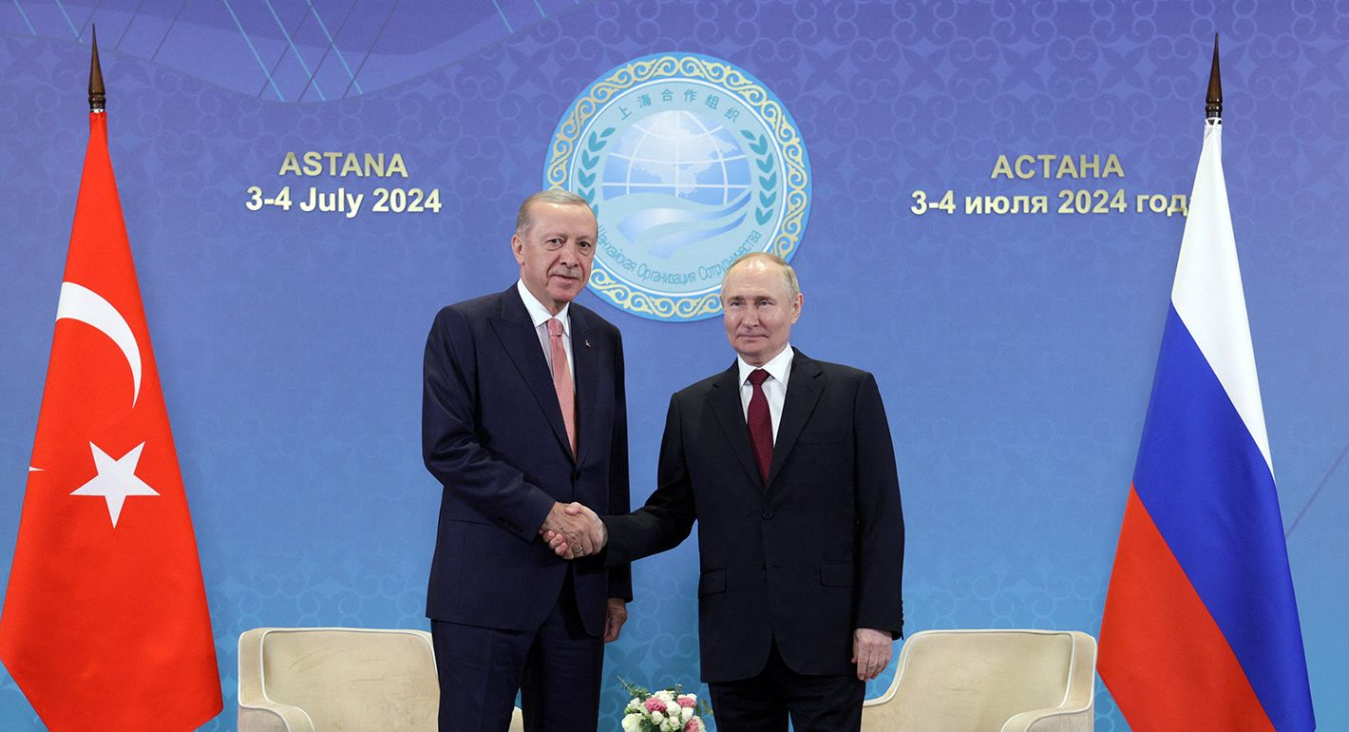 As a NATO member with ties to Russia and a supplier of military aid to Ukraine, Turkey occupies a unique geopolitical position in the conflict.
As a NATO member with ties to Russia and a supplier of military aid to Ukraine, Turkey occupies a unique geopolitical position in the conflict.
Long-Term Scenarios
Best Case: A frozen Ukraine conflict stabilises Europe, with Kyiv retaining partial sovereignty while Russia consolidates territorial gains. NATO endures but with diminished credibility.
Worst Case: NATO fractures amid European disunity. China capitalises on transatlantic discord to assert dominance in the Pacific, while the Middle East destabilises amid Iranian retrenchment.
Wildcard: Europe’s pursuit of strategic autonomy gains traction. Franco-German proposals for an EU army, coupled with industrial policy initiatives, could herald a more sovereign Europe. Yet, without robust military capabilities, such autonomy remains aspirational. Further complicating this trajectory is the potential rise of Germany’s AfD, which advocates for ending sanctions on Russia and reestablishing economic ties. Should the party gain significant power, it could fracture the EU’s united front on Ukraine, amplifying existing divisions within the bloc and further weakening NATO cohesion. A resurgent AfD could also fracture Germany’s commitment to EU unity, emboldening pro-Russian factions in Eastern Europe and undermining collective sanctions.
Conclusion
The post-Cold War order is unravelling, supplanted by a multipolar landscape defined by interest-driven partnerships and fluid spheres of influence. The U.S.-Russia détente, Europe’s strategic marginalisation, and China’s encirclement herald a new era of great-power competition. While Trump’s strategy of triangulation may yield short-term gains, the long-term consequences, fractured alliances, contested borders, and intensified regional rivalries, remain profoundly uncertain. As the global chessboard realigns, the coming years will test the resilience of established powers and the adaptability of emergent ones.
